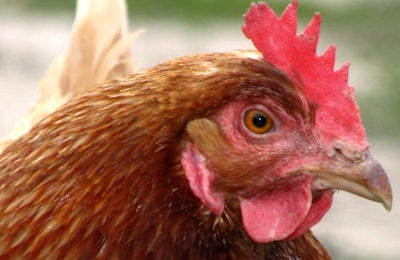
A further three outbreaks of highly pathogenic avian influenza (HPAI) have been confirmed this month in Malaysian poultry, and new cases have occurred at a Taiwanese layer farm.
Malaysia’s total number of HPAI outbreaks has risen to four, as its Department of Veterinary Services confirmed to the World Organisation for Animal Health (OIE) that the H5N1 virus variant had been detected at a further three farms earlier this month. Like the previous outbreak, the affected premises are located in the Tuaran district in the state of Sabah.
The latest cases, which total 1,645 local poultry, belonged to flocks ranging from 239 to 1,100 birds. Of the total, 28 died and the rest have been destroyed.
Taiwan’s agriculture ministry has confirmed one new HPAI outbreak in poultry to the OIE in the last week. Latest to be affected was a layer farm in Pingtung county, where more than 20,000 hens were lost to the disease through mortality or humane destruction.
With the majority of recent cases of H5N2 HPAI detected through a national surveillance program rather than following clinical symptoms, this latest outbreak represents a small backward step in Taiwan’s battle against the virus, which began in early 2015. The rate of official reporting of new cases is considerably down from its peak.
OIE has been informed by Nepal’s Ministry of Livestock Resources that the earlier HPAI situation in the country has been “resolved”. The H5N1 virus appears to have been brought under control following just one outbreak of the disease as a farm in the Chitwan district of Narayani zone in May this year.
Europe: avian flu situation “resolved” in two countries
Danish and Swiss veterinary authorities have issued final reports to the OIE following previous isolated outbreaks of avian influenza.
In Denmark, the move follows the detection in two commercial duck flocks — a low-pathogenic H5 virus in Jutland in May, and an H5N2 variant in Zealand in June. Neither subtype has been detected in the country since the end of June.
In Switzerland, the Federal Veterinary Office has informed the OIE that the H5N6 HPAI virus has not been detected in the wild bird population since a single case in a wild swan in the canton of Bern at the end of 2017.
New human case of H7N9 in China
China’s medical authority, the National Health and Family Planning Commission has confirmed a new human case of avian influenza A(H5N6) according to Hong Kong’s Centre for Health Protection. The patient, a man from Laibin city in Guangxi Zhuang Autonomous Region, had previous contact with poultry, and was said to be in a serious condition.
This is the 20th confirmed case of this infection to be reported by the Chinese authorities since 2014.
The influenza A(H5N6) viruses that have infected people in China are different from those of the same subgroup that have been detected in birds in parts of Europe and Asia, according to the World Health Organization (WHO).
China has reported no new human cases of avian influenza A(H7N9) since February this year, and the last case of H5N1 was in September of 2017.
Illegal poultry meat trade confirmed as avian flu risk
Research in Japan has confirmed that poultry meat infected with H7N9 avian influenza viruses and illegally imported by air passengers represents a risk to human and animal health.
Viruses of both high and low pathogenicity were detected in some of the more than 160 samples of uncooked poultry meat that had been confiscated by border authorities, according to a paper published online in the November 2018 issue of the journal Virology
This is the first time this virus subtype has been reported in meat outside China, according to the authors.

















